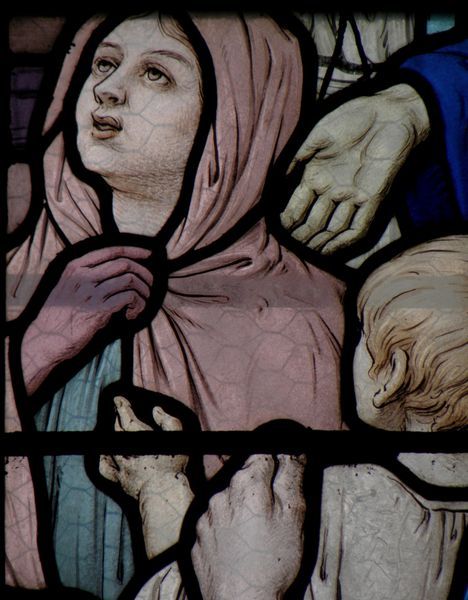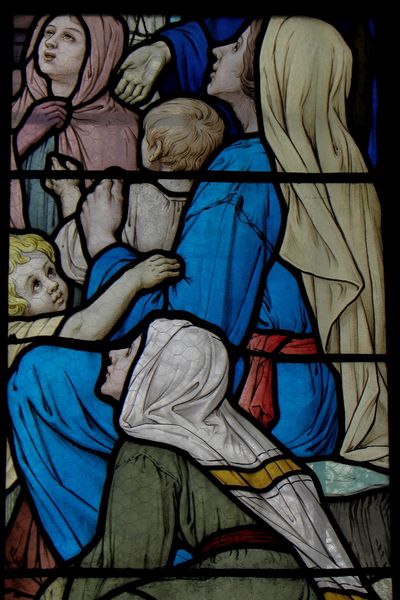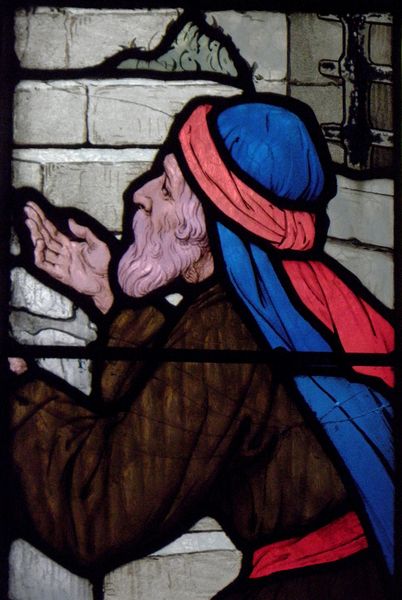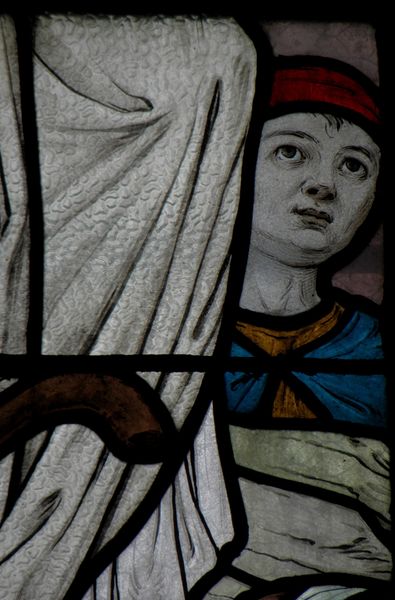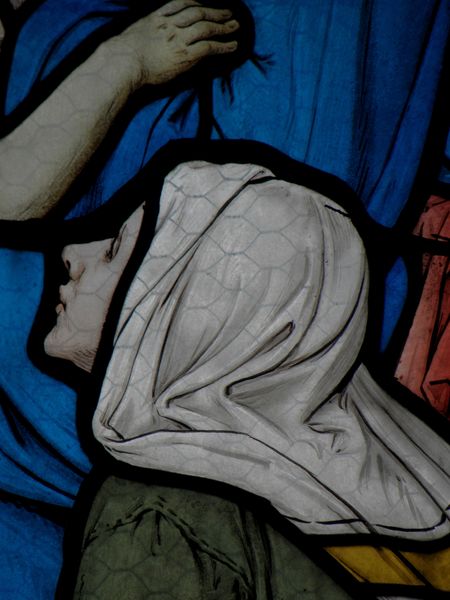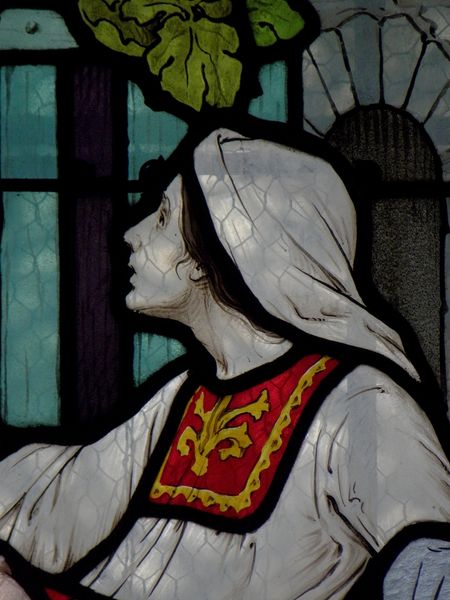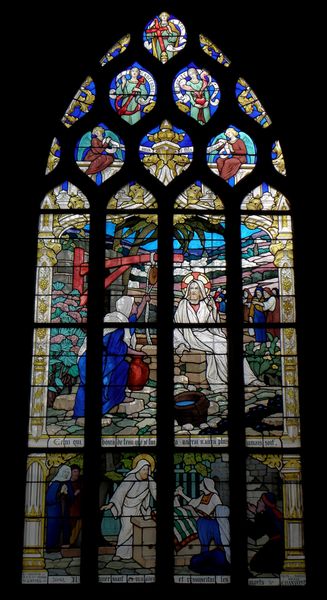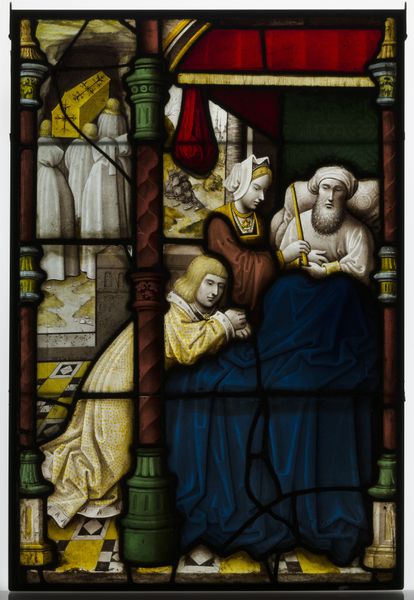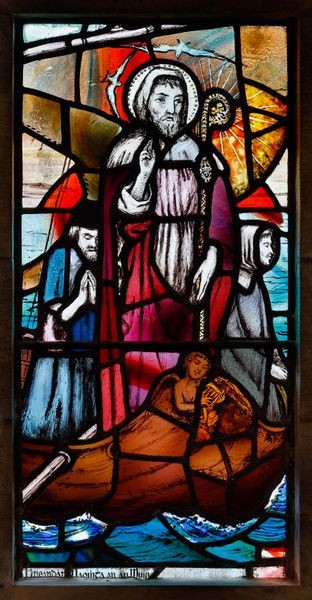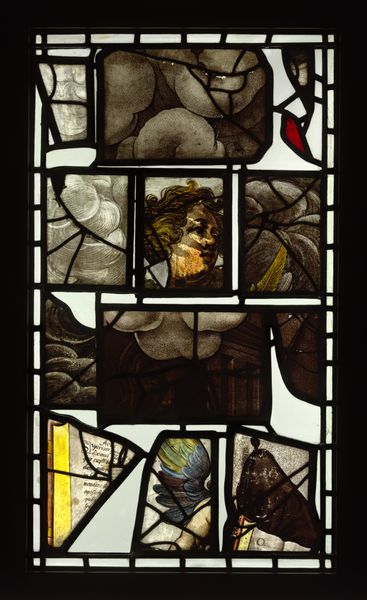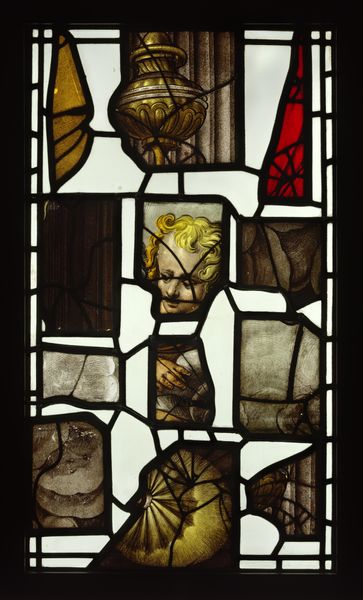
#
pasteup
#
graffiti art
#
street art
#
mural art
#
paste-up
#
tile art
#
street graffiti
#
spray can art
#
urban art
#
home decor
Copyright: Public domain
Curator: This fragment comes from a larger stained-glass composition entitled “Life of Christ,” created by Ludovic Alleaume around 1919 for the Église Saint-Sulpice de Fougères. Editor: It's immediately striking how muted the colors are; not the typical vibrant hues you’d expect from stained glass. There’s a definite somber mood being evoked here, a gravity reflected in the hunched figure. Curator: Indeed. We're looking at a figure bowed in either grief or contemplation, shrouded. The use of veiled figures throughout art history is heavily coded with sorrow, repentance, humility... especially within a religious context like this. It evokes Mary Magdalene's mourning, perhaps? Editor: It could certainly be read that way. But focusing on the formal elements, look at the repeated patterns – the crisscrossing lines on the veil, echoed faintly in the garments. There’s a powerful use of geometry to impose a sense of order, almost a visual control over the raw emotion conveyed. And that red object... what is it, a box? A reliquary perhaps, but it introduces an element of almost graphic simplicity into the more naturalistic drapery above. Curator: A reliquary fits symbolically, given its location within the narrative of the “Life of Christ.” The patterns you noticed create a feeling of containment, maybe even fate; that feeling that their world, as preordained as it is, has those elements within. This containment channels that emotion inward, it’s visually reinforcing repression and resolution. I wonder if the specific patterns have a significance. Editor: Precisely! I'm struck by how the color scheme enforces this same order; a small field of brilliant, saturated blue punctuates the muted palette in the same way the pure geometry of that red form contrasts with the more expressionist handling of the figure. And what about those inscriptions on the lower part? They almost become a texture rather than readable text, integrating themself into the work on a compositional level. Curator: Those inscriptions further tie us back to this composition’s purpose. A constant reminder of the divine script it's rooted in. Thinking about the aftermath of the First World War during which this stained glass work was created and situated in a church, Alleaume taps into this sense of faith and visual order amidst an historical and global environment lacking exactly that, for people surely seeking it then. Editor: Yes, you're right! Bringing it all back to its context only makes it that much richer. A very carefully constructed window!
Comments
No comments
Be the first to comment and join the conversation on the ultimate creative platform.

